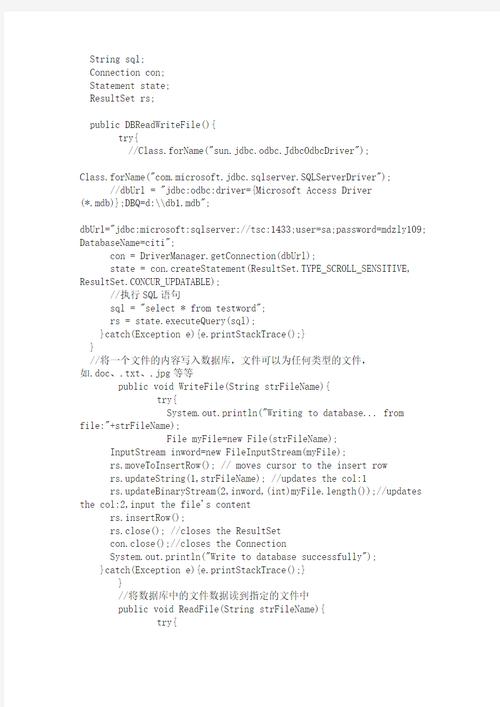1.什么是 JSQLParser?
JSQLParser 是一个开源的 Java 库,用于解析 SQL 语句并将其转换为抽象语法树(AST)。它支持多种 SQL 方言,包括 MySQL、PostgreSQL、Oracle 和 SQL Server 等。JSQLParser 使开发者能够轻松地分析、修改和生成 SQL 语句,广泛应用于数据库工具、ORM 框架和数据迁移工具等场景。
2.JSQLParser 的主要功能
SQL 解析:JSQLParser 能够将 SQL 查询字符串解析为结构化的对象模型,方便后续的操作和分析。
抽象语法树(AST):解析后的 SQL 语句以 AST 的形式表示,开发者可以通过访问这些对象来获取 SQL 语句的各个组成部分,如选择字段、表名、条件等。
SQL 生成:除了解析,JSQLParser 还支持将 AST 重新生成 SQL 语句,这对于动态构建 SQL 查询非常有用。
支持多种 SQL 方言:JSQLParser 支持多种 SQL 方言,开发者可以根据需要选择合适的方言进行解析。
灵活的扩展性:JSQLParser 提供了丰富的 API,允许开发者根据具体需求扩展和定制解析器的行为。
3.JSQLParser 的使用场景
数据库工具:在数据库管理工具中,JSQLParser 可以用于解析用户输入的 SQL 查询,提供语法高亮、自动补全等功能。
ORM 框架:在对象关系映射(ORM)框架中,JSQLParser 可以帮助将对象模型转换为 SQL 查询,并解析 SQL 结果集。
数据迁移和转换:在数据迁移工具中,JSQLParser 可以解析源数据库的 SQL 语句,并生成目标数据库所需的 SQL 语句。
SQL 优化:通过解析 SQL 语句,开发者可以分析查询的性能,并进行优化。
4.如何使用 JSQLParser引入依赖:
在 Maven 项目中,可以通过以下依赖引入 JSQLParser:
dependency>
groupId>com.github.jsqlparsergroupId>
artifactId>jsqlparserartifactId>
version>3.2version>
dependency>
解析 SQL 语句:
package com.et;
import net.sf.jsqlparser.parser.CCJSqlParserUtil;
import net.sf.jsqlparser.statement.Statement;
import net.sf.jsqlparser.statement.select.Select;
import net.sf.jsqlparser.statement.select.PlainSelect;
import net.sf.jsqlparser.statement.select.SelectItem;
import net.sf.jsqlparser.expression.Expression;
import java.util.List;
public class SqlParserExample {
public static void main(String[] args) {
// SQL query to be parsed
String sql = "SELECT id, name FROM users WHERE age > 30";
try {
// Parse the SQL statement
Statement statement = CCJSqlParserUtil.parse(sql);
// Ensure the parsed statement is a SELECT statement
if (statement instanceof Select) {
Select selectStatement = (Select) statement;
PlainSelect plainSelect = (PlainSelect) selectStatement.getSelectBody();
// Get the selected columns
List selectItems = plainSelect.getSelectItems();
System.out.println("Selected columns:");
for (SelectItem item : selectItems) {
System.out.println(item);
}
// Get the WHERE condition
Expression where = plainSelect.getWhere();
System.out.println("WHERE condition:");
if (where != null) {
System.out.println(where);
} else {
System.out.println("No WHERE condition");
}
}
} catch (Exception e) {
e.printStackTrace(); // Print the stack trace in case of an exception
}
}
}
Code Explanation
Package Declaration: The code is part of the com.et package.
Imports: Necessary classes from the JSQLParser library are imported to handle SQL parsing.
Main Class: The SqlParserExample class contains the main method, which is the entry point of the program.
SQL Query: A SQL query string is defined for parsing.
Parsing the SQL Statement: The SQL string is parsed using CCJSqlParserUtil.parse(sql).

Checking Statement Type: The code checks if the parsed statement is an instance of Select.
Getting Selected Columns: The selected columns are retrieved from the PlainSelect object and printed to the console.
Getting WHERE Condition: The WHERE condition is retrieved and printed. If there is no WHERE condition, a corresponding message is displayed.
Exception Handling: Any exceptions that occur during parsing are caught and printed to the console.
This code effectively demonstrates how to parse a SQL SELECT statement and extract the selected columns and WHERE conditions using JSQLParser.
生成 SQL 语句:
package com.et;
import net.sf.jsqlparser.parser.CCJSqlParserUtil;
import net.sf.jsqlparser.schema.Column;
import net.sf.jsqlparser.schema.Table;
import net.sf.jsqlparser.statement.select.Select;
import net.sf.jsqlparser.statement.select.SelectBody;
import net.sf.jsqlparser.statement.select.PlainSelect;
import net.sf.jsqlparser.statement.select.SelectItem;
import net.sf.jsqlparser.expression.LongValue;
import net.sf.jsqlparser.expression.BinaryExpression;
import net.sf.jsqlparser.expression.operators.relational.GreaterThan;
import net.sf.jsqlparser.statement.select.SelectExpressionItem; // Ensure SelectExpressionItem class is imported
import java.util.ArrayList;
import java.util.List;
public class SqlGeneratorExample {
public static void main(String[] args) {
// Create a Select object
Select select = new Select();
// Create a PlainSelect object
PlainSelect plainSelect = new PlainSelect();
// Set the selected columns
List selectItems = new ArrayList();
selectItems.add(new SelectExpressionItem(new Column("id"))); // Use Column class for "id"
selectItems.add(new SelectExpressionItem(new Column("name"))); // Use Column class for "name"
plainSelect.setSelectItems(selectItems);
// Set the table
Table table = new Table("users");
plainSelect.setFromItem(table);
// Set the WHERE condition
BinaryExpression whereCondition = new GreaterThan(); // Create a GreaterThan expression
whereCondition.setLeftExpression(new Column("id")); // Set the left expression to the "id" column
whereCondition.setRightExpression(new LongValue(10)); // Set the right expression to a LongValue of 10
plainSelect.setWhere(whereCondition);
// Set the PlainSelect as the SelectBody
select.setSelectBody(plainSelect);
// Generate the SQL statement
String generatedSql = select.toString();
System.out.println(generatedSql); // Print the generated SQL statement
}
}
Code Explanation
Package Declaration: The code is part of the com.et package.
Imports: Necessary classes from the JSQLParser library are imported to handle SQL generation.
Main Class: The SqlGeneratorExample class contains the main method, which is the entry point of the program.
Creating Select Object: A Select object is created to represent the SQL SELECT statement.
Creating PlainSelect Object: A PlainSelect object is created to define the details of the SELECT statement.
Setting Selected Columns: A list of SelectItem objects is created to hold the selected columns. Each column is added using the SelectExpressionItem class.
Setting Table: A Table object is created to specify the table from which to select data.
Setting WHERE Condition: A GreaterThan expression is created to define the WHERE condition. The left expression is set to the “id” column, and the right expression is set to a LongValue of 10.
Setting SelectBody: The PlainSelect object is set as the body of the Select statement.
Generating SQL Statement: The SQL statement is generated by calling toString() on the Select object, and the generated SQL is printed to the console.
以上只是一些关键代码,所有代码请参见下面代码仓库
代码仓库JSQLParser 的优缺点
优点:
缺点:
总结
JSQLParser 是一个强大的 SQL 解析工具,适用于各种 Java 应用程序。无论是数据库管理工具、ORM 框架还是数据迁移工具,JSQLParser 都能提供高效的 SQL 解析和生成能力。通过灵活的 API 和对多种 SQL 方言的支持,开发者可以轻松地处理 SQL 语句,提升开发效率。
